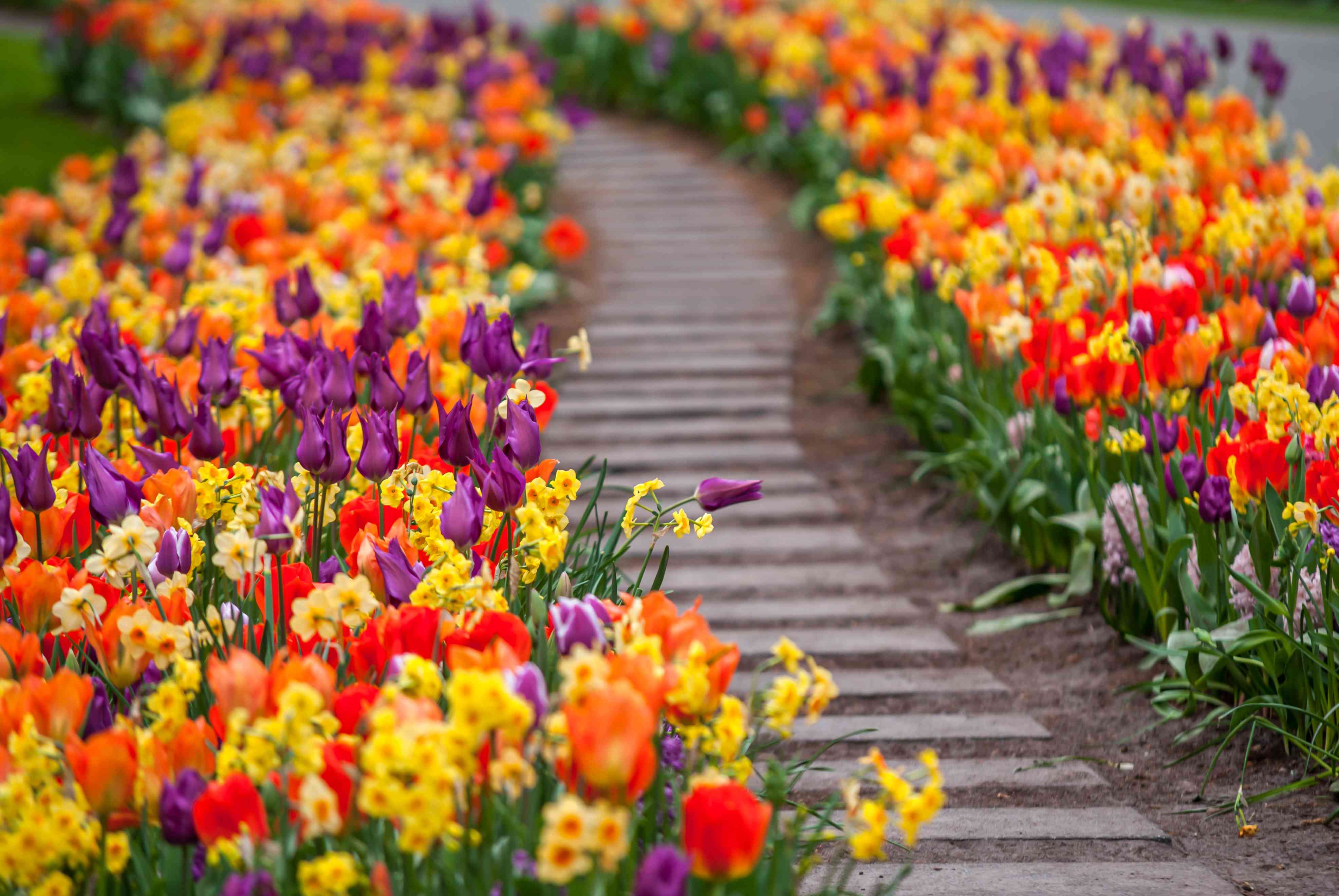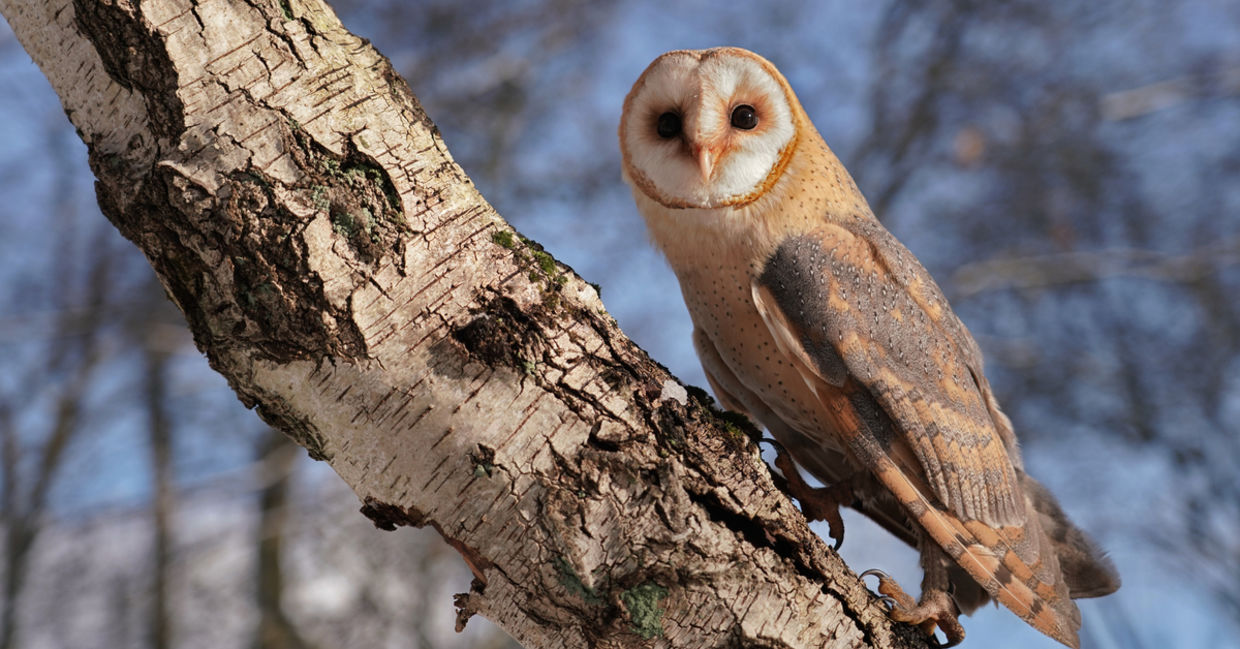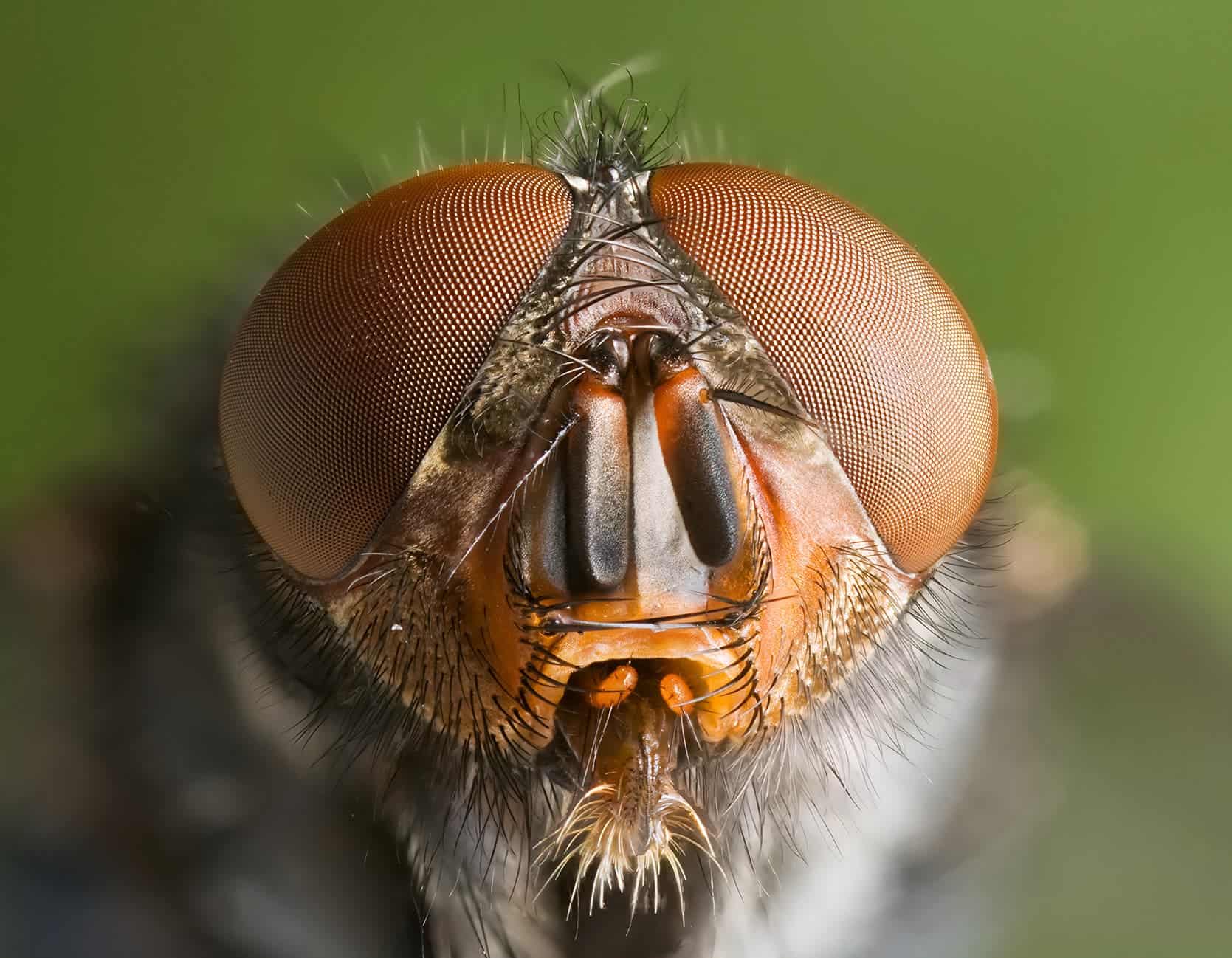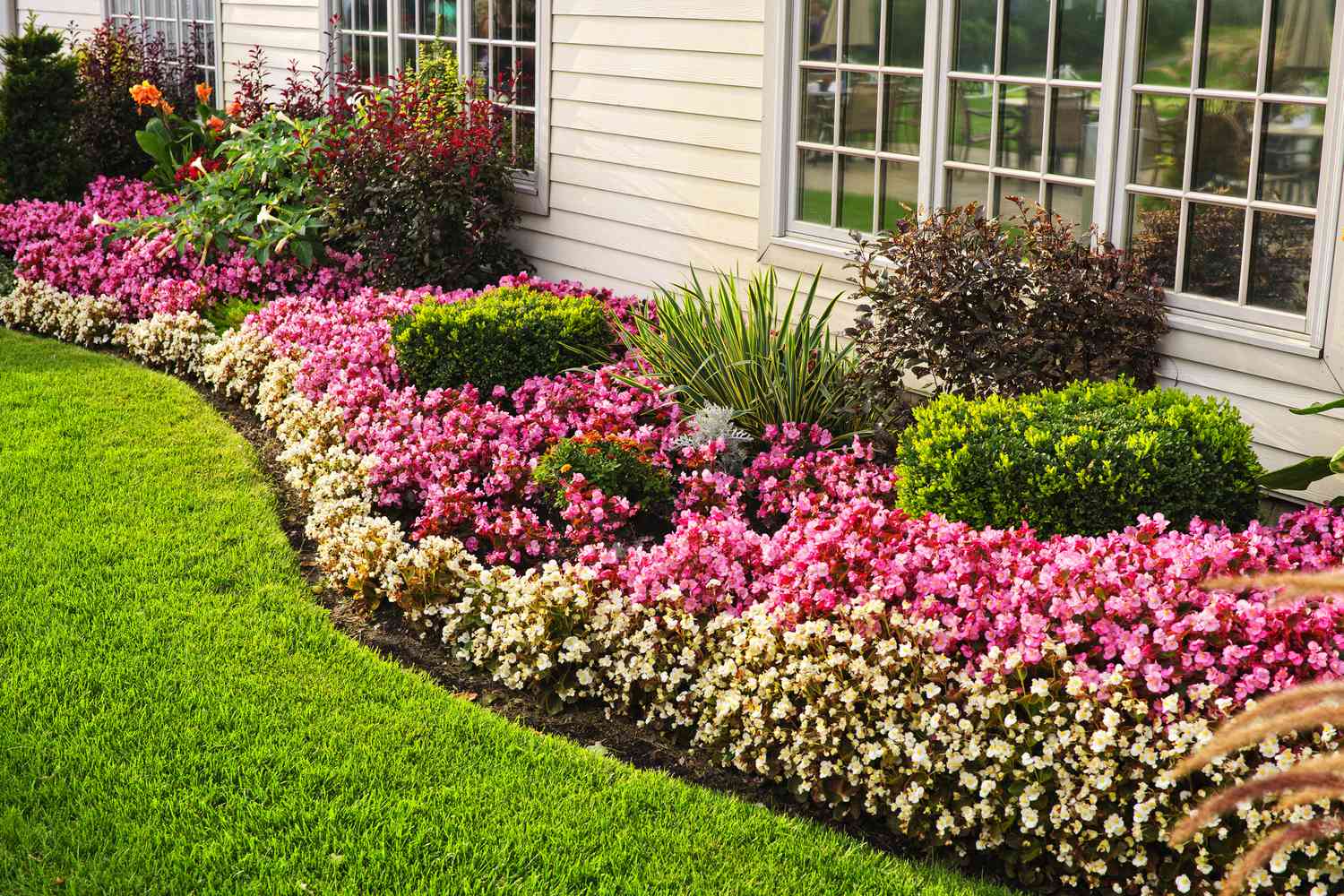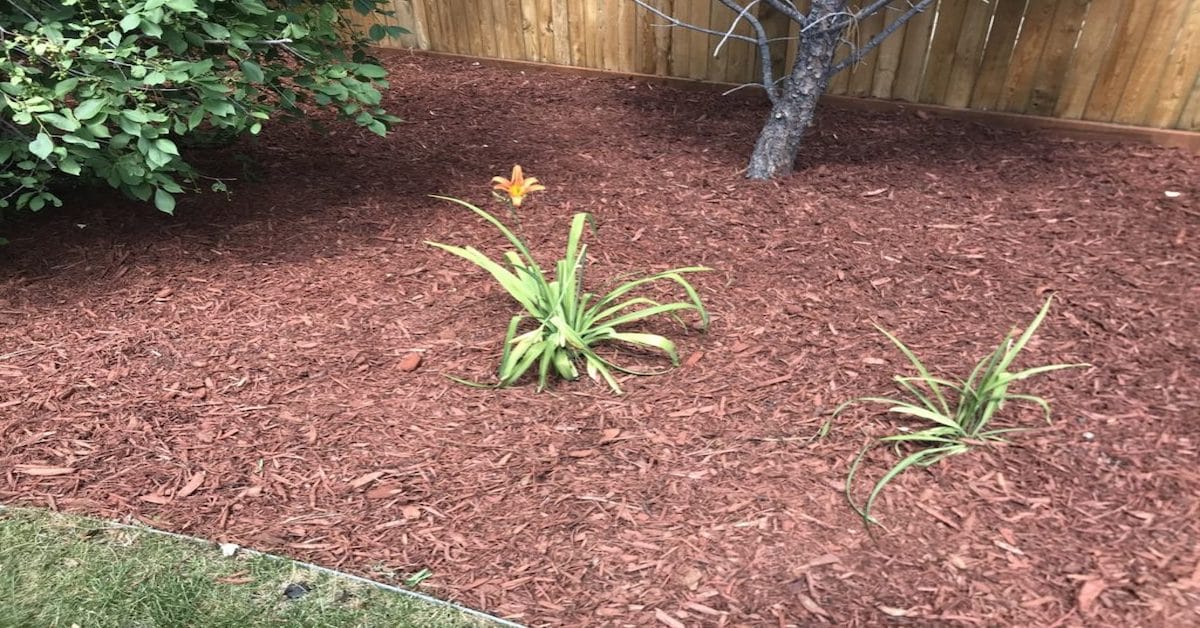(Many of the links in this article redirect to a specific reviewed product. Your purchase of these products through affiliate links helps to generate commission for Chicagolandgardening.com, at no extra cost. Learn more)
How To Choose Flower Colors For Landscaping
Introduction
When it comes to planning your garden, choosing the right flower colors can make a significant impact on the overall aesthetic. The colors you choose can evoke certain emotions, set a specific mood, and create visual interest in your landscaping design. Whether you’re aiming for a vibrant and energizing display or a calm and soothing oasis, understanding how to select flower colors can help you achieve your desired outcome.
Flower colors play a vital role in creating a harmonious and visually appealing garden. They can be used to highlight focal points, add depth, and create a sense of balance. With an array of options available, it’s essential to consider various factors to ensure your flower choices enhance your garden’s overall look and feel.
In this article, we will explore the key factors to consider when choosing flower colors for landscaping to help you create a stunning and cohesive garden design. From understanding the basic color wheel to considering the existing structures and surrounding environment, these tips will guide you in making informed decisions and unleash your creativity.
By carefully selecting flower colors, you can transform your garden into a beautiful and inviting space that reflects your personal style and preferences. So, let’s dive in and explore the wonderful world of flower colors for landscaping.
Factors to Consider in Choosing Flower Colors for Landscaping
Choosing the right flower colors for your landscaping requires careful consideration of various factors. By taking these factors into account, you can create a visually appealing and harmonious garden design. Let’s explore the key considerations:
- Understanding the Basic Color Wheel: It’s important to have a basic understanding of the color wheel and how colors relate to each other. The color wheel consists of primary colors (red, yellow, blue), secondary colors (orange, green, purple), and tertiary colors (combination of primary and secondary colors). Choosing colors that are adjacent or opposite on the color wheel can create a visually pleasing and balanced look.
- Consider the Overall Mood or Theme: Think about the atmosphere you want to create in your garden. Do you want a vibrant and energetic space or a calm and serene oasis? Selecting warm colors like red, orange, and yellow can create a lively and invigorating feel, while cooler colors like blue, purple, and green can evoke a sense of tranquility.
- Complementing Existing Structures or Features: Take into account the colors of existing structures, such as your house, fence, or patio furniture. Choose flower colors that complement or enhance the surrounding elements. For example, if you have a red brick house, consider planting flowers with shades of purple or pink to create a pleasing contrast.
- Creating Visual Focal Points: Flowers can be used to draw attention and create focal points in your garden. Select colors that stand out and create a visual impact. Use vibrant and bold colors to create a focal point or add pops of color in strategic areas.
- Seasonal Color Changes: Consider how the colors of your flowers will change throughout the seasons. Some flowers have vibrant blooms during spring and summer but may have faded or dormant colors during fall and winter. Plan your flower choices accordingly to ensure a consistent and visually appealing display throughout the year.
- Considering the Surrounding Environment: Take into account the surrounding environment, including neighboring gardens, trees, and vegetation. Select flower colors that harmonize with the natural elements and complement the overall landscape. For instance, if you have a lot of greenery around, opt for flowers with contrasting colors like yellow or purple to create an eye-catching display.
- Using Color to Create Depth and Perspective: Use color strategically to create depth and perspective in your garden. Select lighter colors for foreground plantings and darker colors for background plantings to create the illusion of depth and make your garden appear larger.
- Considering the Maintenance and Care Requirements: Different flowers have varying maintenance and care requirements. Consider the time and effort you’re willing to invest in maintaining your garden. Choose flowers that not only have the desired colors but also align with your gardening skills and preferences.
By considering these factors, you’ll be able to choose flower colors that harmonize with your garden, reflect your personal style, and create an inviting and visually captivating outdoor space. Now that you have a better understanding of these key considerations, it’s time to dig in and start planning your stunning garden!
Understanding the Basic Color Wheel
When it comes to choosing flower colors for landscaping, having a basic understanding of the color wheel is essential. The color wheel is a visual representation of the relationships between different colors. By understanding how colors relate to each other, you can create a harmonious and visually pleasing garden design.
The color wheel is divided into three main categories:
- Primary Colors: The primary colors are red, yellow, and blue. These colors cannot be created by mixing other colors together. In landscaping, primary colors are often used to create bold and eye-catching displays.
- Secondary Colors: Secondary colors are created by mixing two primary colors together. The secondary colors are orange (red + yellow), green (yellow + blue), and purple (red + blue). These colors offer a wide range of options for adding depth and variety to your garden.
- Tertiary Colors: Tertiary colors are created by mixing a primary color with a secondary color. These colors, such as yellow-green or blue-violet, offer even more variety and subtlety in your flower color choices.
In addition to these basic categories, the color wheel also showcases the relationships between colors. Colors that are adjacent to each other on the color wheel, known as analogous colors, create a sense of harmony and cohesiveness when used together. For example, pairing shades of pink and purple can create a serene and sophisticated color palette.
On the other hand, colors that are opposite each other on the color wheel, known as complementary colors, create a vibrant and contrasting effect. Using complementary colors, such as purple and yellow or red and green, can create visually striking combinations that instantly grab attention.
Understanding the basic principles of the color wheel allows you to make informed choices when selecting flower colors for your garden. By utilizing analogous colors for a harmonious look or incorporating complementary colors for a bold statement, you can create a visually stunning and balanced landscape design.
Now that you have a grasp on the color wheel, you can explore the wide range of flower colors available and confidently choose the ones that will bring your garden to life. So, let the colors of the color wheel be your guide as you embark on your flower color selection journey!
Consider the Overall Mood or Theme
When choosing flower colors for your landscaping, it’s important to consider the overall mood or theme you want to create in your garden. The colors you select can evoke certain emotions, set a specific atmosphere, and create a cohesive look and feel.
One way to determine the mood or theme is by considering the purpose or function of your garden. Are you creating a lively and energetic space for outdoor gatherings and entertainment? Or are you aiming for a calm and tranquil retreat where you can unwind and relax after a long day?
If you want to create an energetic and vibrant atmosphere, consider choosing warm colors like red, orange, and yellow. These colors are known for their ability to stimulate and energize. They can make a garden feel lively and inviting, perfect for socializing and creating a cheerful ambiance.
On the other hand, if you’re looking to create a calm and soothing oasis, cooler colors like blue, purple, and green can help achieve this. These colors are known for their calming effects and can create a tranquil and serene garden environment. Incorporating shades of blue can evoke a sense of peacefulness, while purple can add a touch of sophistication. Green, the color of nature, can create a harmonious and refreshing atmosphere.
Consider the style of your garden as well. If you’re going for a romantic and elegant vibe, flowers in soft pastel colors like pink, peach, and lavender can enhance the desired aesthetic. If you prefer a contemporary and modern look, bold and vibrant colors like fuchsia, electric blue, or lime green can make a striking and eye-catching statement.
Additionally, keep in mind the relationship between colors and emotions. Warm colors tend to evoke feelings of happiness, excitement, and enthusiasm. Cool colors, on the other hand, are associated with calmness, relaxation, and harmony. By understanding the emotional impact of different color choices, you can create a garden that not only looks visually appealing but also elicits the desired emotions and feelings.
By considering the overall mood or theme you want to create in your garden, you can choose flower colors that align with your vision. Whether you want to create an invigorating and vibrant space or a serene and calming retreat, selecting the right colors will play a significant role in achieving your desired garden atmosphere.
So, take some time to reflect on the mood or theme you want to establish and let that guide your flower color choices. With careful consideration and a clear vision, you can transform your garden into a picturesque and captivating outdoor haven.
Complementing Existing Structures or Features
When choosing flower colors for your landscaping, it’s important to consider the existing structures or features in your garden. By selecting flower colors that complement and enhance these elements, you can create a cohesive and visually pleasing outdoor space.
Start by taking a good look at the structures surrounding your garden. This may include your house, fence, patio, or any other permanent structures. Consider the colors and materials used in these structures, as they will serve as a backdrop for your flower choices.
For example, if you have a house with a brick exterior, consider selecting flower colors that complement the earthy tones of the brick. Flowers in shades of purple or pink can create a pleasing contrast against the warm red or brown hues of the brick. On the other hand, if your house has a more neutral color palette, you have more flexibility in your flower color choices, as they can serve as vibrant accents to your garden.
Similarly, take into account any existing features or focal points in your garden. This might include a sculpture, a water feature, or a specific area that you want to highlight. Choose flower colors that enhance and draw attention to these features. For example, if you have a stone fountain, consider planting flowers in shades of blue or white to create a serene and cohesive look.
Consider the color of your garden furniture or decorative elements as well. If you have bright or bold-colored outdoor furniture, choosing flowers in complementary or harmonizing shades can create a cohesive look. On the other hand, if your furniture is more neutral, you can use flowers to add pops of color and create visual interest.
Remember, the goal is to create a harmonious and balanced garden design where the flower colors work together with the existing structures and features. By considering the colors and materials of these elements, you can choose flower colors that complement and enhance the overall aesthetic of your garden.
So, take a walk around your garden and examine the existing structures and features. Consider their colors and materials, and let them guide your flower color choices. By selecting flower colors that harmonize with the existing elements, you can create a visually pleasing and cohesive landscape that truly reflects your personal style and taste.
Creating Visual Focal Points
One effective way to enhance the visual appeal of your garden is by creating focal points using flower colors. Focal points are areas or elements in your garden that draw attention and become the main points of interest. By strategically using flower colors, you can create eye-catching focal points that enhance the overall landscape design.
There are several ways to create visual focal points using flower colors:
1. Contrasting Colors: Choose flower colors that contrast with the surrounding colors in your garden. For example, plant flowers with vibrant yellow or red hues against a backdrop of green foliage. The stark contrast will naturally draw the eye to those areas, creating a focal point.
2. Bold and Vibrant Colors: Opt for flowers in bold and vibrant colors to create instant visual impact. Bright colors like orange, hot pink, or electric blue naturally stand out in the landscape and can serve as focal points that catch the attention of viewers.
3. Unique or Unusual Flower Colors: Select flowers with unique or uncommon colors that are not commonly found in gardens. These unique hues can make a striking statement and create a focal point. For example, flowers with black or deep purple colors can create a sense of mystery and intrigue.
4. Groupings or Mass Plantings: Another way to create a focal point is by grouping flowers of the same color together in a specific area. By planting multiple specimens of the same color, you can create a visually impactful display that naturally draws attention.
5. Height and Structure: Consider the height and structure of your flowers when creating focal points. Taller plants or flowers with unique shapes can act as natural focal points in the garden. For example, tall spiky flowers like delphiniums or foxgloves can create vertical focal points that add height and interest to your garden.
By strategically incorporating these techniques, you can create visual focal points that add depth, interest, and a sense of design to your garden. Remember to place them in areas where they will be easily noticed and appreciated, such as along walkways, near seating areas, or as a centerpiece in a particular garden bed.
When designing your garden with focal points, aim for a balanced composition. Too many focal points in close proximity can lead to a visually overwhelming and cluttered look. Instead, choose a few well-placed focal points that complement each other and guide the viewer’s eye throughout the space.
By utilizing flower colors to create visual focal points, you can direct attention to specific areas in your garden and create a visually stunning landscape that captivates and delights. So, let your creativity shine as you strategically use flower colors to create eye-catching focal points in your garden.
Seasonal Color Changes
When choosing flower colors for your landscaping, it’s important to consider how the colors will change throughout the seasons. Flowers undergo natural cycles of growth and bloom, and their colors might shift and transform as the seasons progress. By planning for these seasonal color changes, you can ensure that your garden remains visually appealing and vibrant all year round.
Understanding the lifecycle of different flowers will help you make informed decisions about which colors to choose. Some flowers bloom only in specific seasons, while others may bloom continuously or have multiple blooming periods throughout the year. Researching the specific bloom times and color changes of different flower species will enable you to create a well-coordinated and visually captivating garden throughout the seasons.
For example, in spring, vibrant and pastel colors like pink, yellow, and purple are commonly associated with the rebirth and freshness of the season. Flowers such as tulips, daffodils, and cherry blossoms bloom during this time and add a burst of color to the landscape.
In summer, brighter and bolder colors like red, orange, and blue are often seen in full bloom. Flowers such as sunflowers, zinnias, and coneflowers showcase these vibrant hues and create a lively and energetic atmosphere in your garden.
As autumn arrives, the colors of the garden start to shift towards warm and earthy tones. Flowers like marigolds, chrysanthemums, and dahlias showcase hues of yellow, orange, and red, mirroring the changing colors of the leaves and creating a cozy and inviting ambiance.
When winter comes, many flowers go dormant or have subdued colors. However, there are still options for adding color to your winter garden. Flowers such as pansies, hellebores, and winter jasmine can provide pops of color during this time, with shades of purple, white, and pink.
By selecting flowers that bloom in different seasons and considering the color changes they undergo, you can create an ever-changing and visually dynamic garden. Additionally, by strategically planting flowers with succession bloom times, you can ensure a continuous display of color throughout the year.
Consider incorporating evergreen plants and shrubs into your garden design, as they maintain their foliage and provide a backdrop against which the seasonal flower colors can shine. Evergreens, such as boxwoods or yews, act as a canvas for the changing colors and add structure and depth to your garden.
By planning for seasonal color changes in your garden, you can create a visually stunning and evolving landscape that delights the eye throughout the year. Explore the possibilities of different flowers and their respective bloom times and colors, and let the seasons be your guide in creating a garden that’s always in bloom.
Considering the Surrounding Environment
When choosing flower colors for your landscaping, it’s essential to consider the surrounding environment. The surrounding landscape and vegetation, neighboring gardens, and the overall natural setting can greatly influence your color choices. By understanding and harmonizing with the environment, you can create a garden that seamlessly integrates into its surroundings.
Take a walk around your garden and observe the existing landscape. Consider the colors of the trees, shrubs, and other plantings nearby. Take note of any dominant or recurring colors in the natural environment. By selecting flower colors that complement and harmonize with the surroundings, your garden will have a cohesive and integrated look.
For example, if your garden is surrounded by lush green vegetation, consider incorporating flower colors that contrast with the greenery. Colors like yellow, purple, or pink can create a striking contrast against the verdant backdrop, making your flowers stand out and adding visual interest to the landscape.
On the other hand, if your garden is situated near a woodland area with trees and foliage that turn vibrant shades of red, orange, and gold during the autumn season, you might want to select flower colors that complement these fall hues. Choosing flowers in warm tones like red, orange, or burgundy will create harmony and a seamless transition between your garden and the surrounding environment.
Consider the climate and weather conditions as well. In hot and sunny climates, lighter colors like white or pale pastels can help reflect sunlight and keep the garden looking cool and refreshing. In cooler climates, deeper and richer colors like purples, blues, or deep pinks can add warmth and vibrancy to your garden.
Lastly, be mindful of your neighbors’ gardens and how your flower colors will interact with theirs. While you want your garden to stand out, it’s also important to maintain a sense of harmony with the surrounding gardens. Consider the common colors used by your neighbors and aim for complementary or contrasting colors that add diversity without clashing.
By considering the surrounding environment, you can create a garden that harmonizes with its natural surroundings and enhances the overall landscape. Take cues from the colors of the existing landscape, climate, and neighboring gardens, and let them guide your flower color choices. The result will be a garden that feels like a natural extension of its surroundings.
Using Color to Create Depth and Perspective
Color can be used strategically in landscaping to create a sense of depth and perspective, making your garden appear larger and more visually interesting. By understanding how different colors interact and manipulating them in your garden design, you can create an illusion of depth and add a dynamic element to your outdoor space.
One way to create depth is by using lighter colors for plants or flowers in the foreground and darker colors for those in the background. Lighter colors tend to catch and reflect light, making them appear more prominent. By placing lighter-colored plants or flowers closer to the viewer’s line of sight, you create the perception of depth and make the garden feel more spacious.
Conversely, darker colors tend to recede and create the illusion of distance. By using darker hues for plants or flowers in the background, you can create a sense of depth and make your garden appear larger. This technique is particularly effective when combined with lighter-colored plants or flowers in the foreground.
Another method to create depth is by utilizing warm and cool colors strategically. Warm colors, such as red, orange, and yellow, tend to appear more visually closer, while cool colors, such as blue, purple, and green, appear to recede. By strategically placing warm-colored plants or flowers in the foreground and cool-colored ones in the background, you can create the perception of depth and add visual interest to your garden.
In addition to the color of the plants or flowers themselves, you can also use color in hardscape elements to create depth and perspective. For example, using lighter-colored paving stones or mulch in the foreground and darker-colored ones in the background can visually expand the space and create layers of depth.
Consider using color to guide the viewer’s eye through your garden. By strategically placing pops of vibrant colors or focal points along a pathway or in key areas, you can create a sense of movement and draw attention to specific parts of your garden. This not only adds depth but also adds visual interest and creates a dynamic experience for anyone walking through your garden.
By understanding how color can create depth and perspective, you can use this knowledge to design a visually captivating and engaging garden. Experiment with different color combinations and placements, considering the foreground and background, warm and cool colors, and the use of color in both plants and hardscape elements. The result will be a garden that feels multidimensional and provides a visual feast for the eyes.
Considering the Maintenance and Care Requirements
When choosing flower colors for your landscaping, it is crucial to take into consideration the maintenance and care requirements of the flowers you select. Different types of flowers have varying needs in terms of watering, soil conditions, sunlight exposure, and pruning. By considering these factors, you can choose flower colors that align with your gardening skills, available time, and level of commitment.
First, assess your own gardening skills and the amount of time you can dedicate to maintenance. Some flowers require more attention and care than others. If you are a beginner or have a busy schedule, consider selecting flowers that are low maintenance and require minimal care. This will ensure that your garden remains healthy and vibrant, even with limited time and resources.
Consider the conditions of your garden, including the amount of sunlight and the quality of the soil. Some flowers thrive in full sun, while others prefer shade or partial shade. Choosing flowers that are well-suited to the natural conditions of your garden will help ensure their longevity and health.
Additionally, think about the watering needs of the flowers you choose. Some plants require frequent watering, while others are more drought-tolerant. Consider your water availability and the amount of effort you are willing to put into watering your garden. This will help you choose flowers that align with your watering capabilities.
Pruning and deadheading are important maintenance tasks in any garden. Some flowers require regular pruning to maintain their shape and keep them healthy. Deadheading, the removal of spent flowers, encourages continuous blooming. If you are willing to dedicate time to these tasks, you can choose flowering plants that require more frequent pruning or deadheading.
Lastly, consider the longevity of the flowers you select. Some plants are annuals, meaning they complete their lifecycle in one growing season. Others are perennials, meaning they come back year after year. If you prefer a low-maintenance garden, perennials can be a great choice as they require less replanting and care.
By considering the maintenance and care requirements of different flower colors, you can select plants that match your gardening skill level and available time. This will help ensure that your garden remains healthy and vibrant throughout the seasons without requiring excessive effort or resources.
Take the time to research and understand the needs of the flowers you are interested in. Consult with local gardening experts or nursery professionals for advice on plants that are well-suited to your region and climate. By making informed choices about maintenance and care, you can create a beautiful and thriving garden that brings joy and satisfaction for years to come.
Conclusion
Choosing the right flower colors for your landscaping can have a significant impact on the overall aesthetic and atmosphere of your garden. By considering various factors such as the color wheel, the overall mood or theme, complementing existing structures or features, creating visual focal points, seasonal color changes, the surrounding environment, using color to create depth and perspective, and the maintenance and care requirements, you can create a stunning and cohesive garden design.
Understanding the color wheel and how colors relate to each other allows you to make informed choices and create visually pleasing combinations. Considering the overall mood or theme you want to achieve in your garden helps set the right atmosphere and evoke the desired emotions. Complementing existing structures or features creates a harmonious and integrated look, while creating visual focal points draws attention and adds interest to specific areas of your garden.
By planning for seasonal color changes, you can ensure that your garden remains vibrant and appealing throughout the year. Considering the surrounding environment helps your garden blend seamlessly with its surroundings and complements the existing landscape. Using color strategically creates an illusion of depth and perspective, making your garden appear larger and more visually engaging.
Lastly, considering the maintenance and care requirements of the flowers you choose ensures that your garden thrives and remains healthy. By selecting plants that match your gardening skills and available time, you can maintain a beautiful and well-maintained garden without overwhelming yourself with excessive tasks.
As you embark on your journey of selecting flower colors for your landscaping, remember to let your creativity guide you. Experiment with different color combinations, be adventurous with your choices, and have fun in designing your garden. By following these guidelines and considering the various factors, you can create a garden that reflects your personal style, brings joy to your life, and becomes a beautiful sanctuary for you to enjoy for years to come.
